Related Research Articles
Kapellmeister, from German Kapelle (chapel) and Meister (master), literally "master of the chapel choir", designates the leader of an ensemble of musicians. Originally used to refer to somebody in charge of music in a chapel, the term has evolved considerably in its meaning and is today used for denoting the leader of a musical ensemble, often smaller ones used for TV, radio, and theatres.
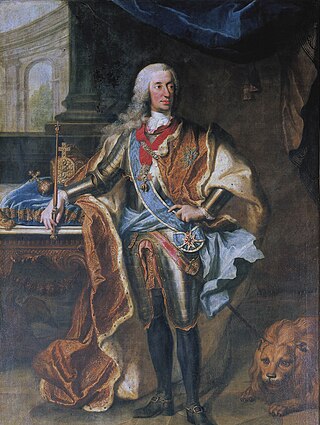
Charles VII was Prince-Elector of Bavaria from 26 February 1726 and Holy Roman Emperor from 24 January 1742 to his death. He was also King of Bohemia from 1741 to 1743. Charles was a member of the House of Wittelsbach, and his reign as Holy Roman emperor thus marked the end of three centuries of uninterrupted Habsburg imperial rule, although he was related to the Habsburgs by both blood and marriage.

Paul Johann Ludwig von Heyse was a German writer and translator. A member of two important literary societies, the Tunnel über der Spree in Berlin and Die Krokodile in Munich, he wrote novels, poetry, 177 short stories, and about sixty dramas. The sum of Heyse's many and varied productions made him a dominant figure among German men of letters. He was awarded the 1910 Nobel Prize in Literature "as a tribute to the consummate artistry, permeated with idealism, which he has demonstrated during his long productive career as a lyric poet, dramatist, novelist and writer of world-renowned short stories." Wirsen, one of the Nobel judges, said that "Germany has not had a greater literary genius since Goethe." Heyse is the fifth oldest laureate in literature, after Alice Munro, Jaroslav Seifert, Theodor Mommsen and Doris Lessing.

German Romanticism was the dominant intellectual movement of German-speaking countries in the late 18th and early 19th centuries, influencing philosophy, aesthetics, literature, and criticism. Compared to English Romanticism, the German variety developed relatively early, and, in the opening years, coincided with Weimar Classicism (1772–1805).
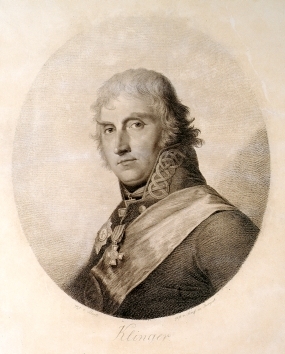
Friedrich Maximilian von Klinger was a German dramatist and novelist. His play Sturm und Drang (1776) gave its name to the Sturm und Drang artistic epoch. He was a childhood friend of Johann Wolfgang von Goethe and is often closely associated with Jakob Michael Reinhold Lenz. Klinger worked as a playwright for the Seylersche Schauspiel-Gesellschaft for two years, but eventually left the Kingdom of Prussia to become a General in the Imperial Russian Army.
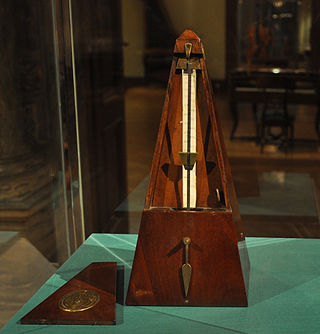
Johann Nepomuk Maelzel was a German inventor, engineer, and showman, best known for manufacturing a metronome and several music-playing automatons, and displaying a fraudulent chess machine. He worked with Beethoven to compose a piece of music for one of his inventions.
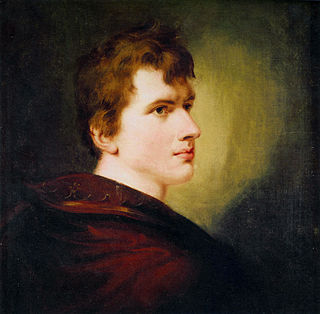
Carl Joachim Friedrich Ludwig von Arnim, better known as Achim von Arnim, was a German poet, novelist, and together with Clemens Brentano and Joseph von Eichendorff, a leading figure of German Romanticism.
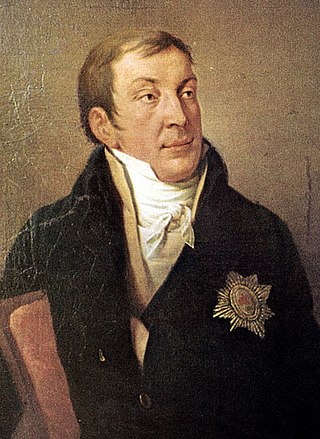
Karl Alois, Prince Lichnowsky of Woschütz; was the second Prince Lichnowsky and a chamberlain at the Imperial Austrian court. He is remembered for his patronage of music and his relationships with Wolfgang Amadeus Mozart and Ludwig van Beethoven.
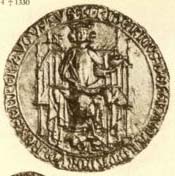
Frederick the Fair or the Handsome, from the House of Habsburg, was the duke of Austria and Styria from 1308 as well as the anti-king of Germany from 1314 until 1325 and then co-king until his death.

The House of Schönborn is the name of an ancient noble and formerly sovereign family of the Holy Roman Empire. As a former ruling and mediatized family, it belongs to the Hochadel.
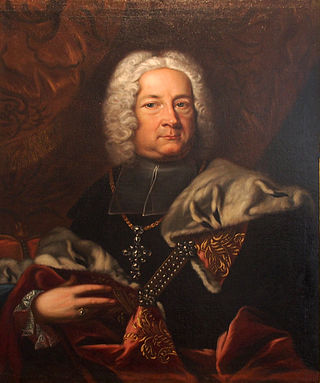
Friedrich Karl von Schönborn was the Prince-Bishop of Würzburg and Prince-Bishop of Bamberg from 1729 to 1746. He also served as Reichsvizekanzler (Vice-Chancellor) of the Holy Roman Empire from 1705 to 1734.
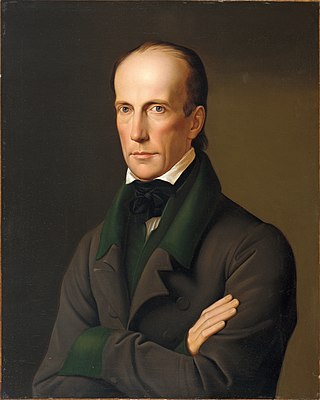
Archduke John of Austria, a member of the House of Habsburg-Lorraine, was an Austrian field marshal and imperial regent (Reichsverweser) of the short-lived German Empire during the Revolutions of 1848.

Franz Gerhard von Kügelgen was a German painter, noted for his portraits and history paintings. He was a professor at the Dresden Academy of Fine Arts and a member of both the Prussian and Russian Imperial Academies of Arts. His twin brother, Karl von Kügelgen, was also a painter of note.
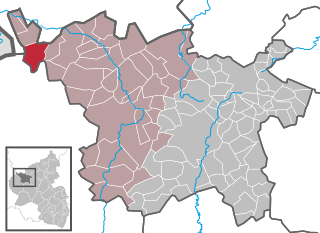
Ormont is an Ortsgemeinde situated in the Vulkaneifel district in Rhineland-Palatinate, Germany. It belongs to the Verbandsgemeinde of Gerolstein, whose seat is in the municipality of Gerolstein.

Ignaz Fränzl was a German violinist, composer and representative of the second generation of the so-called Mannheim School. Mozart, who heard him at a concert in November 1777, wrote of him in a letter to his father: He may not be a sorcerer, but he is a very solid violinist indeed. Fränzl carried the Mannheim violin technique, established by Johann Stamitz, one step further to real virtuosity. Mozart, quite a good violinist himself and thoroughly acquainted with the instrument, praised Fränzl's double trill and said he had never heard a better one.
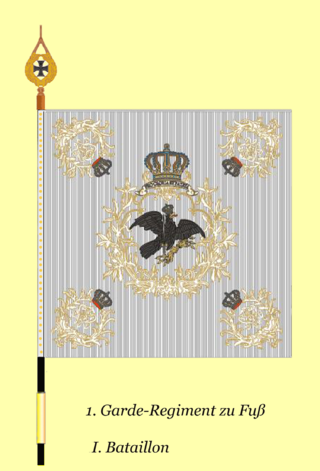
The 1st Foot Guard Regiment was an infantry regiment of the Royal Prussian Army formed in 1806 after Napoleon defeated Prussia in the Battle of Jena–Auerstedt. It was formed by combining all previous Foot Guard Regiments, especially the 6th and the 15th Infantry Regiments of the Old Prussian Army, the former were the famous Potsdam Giants of Frederick William I of Prussia, the latter was commanded and led by Frederick the Great as his life guard, and was, from its inception, the bodyguard-regiment of Kings of Prussia. Save William II, who also wore the uniforms of other regiments, all Prussian Kings and most Princes of Prussia wore the uniform of the 1st Foot Guard Regiment. All Princes of Prussia were commissioned lieutenants in the 1st Foot Guards upon their tenth birthdays. The King of Prussia was also the Colonel-in-chief of the regiment, as well as the Chief of the 1st Battalion and 1st Company of the regiment. Therefore, the regiment held the highest rank within the Prussian Army, which, among other things, meant that the officer corps of the regiment marched before the princes of the German Empire and the diplomatic corps in the traditional New Year's reception. Unofficially, the regiment was known as the "First Regiment of Christendom".

The House of Khevenhüller is an old and prominent Austrian noble family, documented in Carinthia since 1356, with its ancestral seat at Landskron Castle. In the 16th century, the family split into the two branches of Khevenhüller-Frankenburg, Imperial Counts from 1593, and Khevenhüller-Hochosterwitz, raised to Imperial Counts in 1725 and, as Khevenhüller-Metsch, to princely rank (Fürsten) in 1763. The family was mediatised in 1806 and therefore belongs to high nobility.
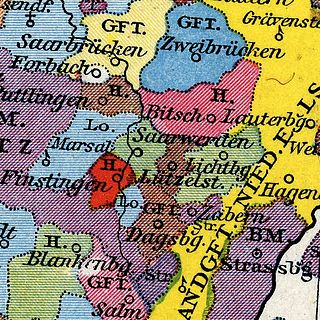
The County of Saarwerden was a county located in Lorraine, within the Holy Roman Empire. As a second-level fief, it belonged to its local ruler and not to the emperor. Its capital was in Bockenheim and later in New Saarwerden or Ville Neuve de Sarrewerden, both in the present city of Sarre-Union. Today, the area of the county belongs to Bas-Rhin, Alsace.

Franz Adam Veichtner, also known as "Feichtner" was a German violinist and composer of the classical era.

Christian Ludwig von Hagedorn was a German art historian and collector, as well as an amateur engraver. He also served as a diplomat. His elder brother, Friedrich, was a well known poet.
References
- 1 2 Entry about Johann von Knauss at German watchmaker website.
- ↑ Entry about Friedrich's brother, Ludwig Johann, at German watchmaker website.
- ↑ Metzner, Paul. Crescendo of the Virtuoso: Spectacle, Skill, and Self-Promotion in Paris during the Age of Revolution. Berkeley: University of California Press, c1998 1998. §1.5.1, paragraph 19, as well as footnotes. Available online here.